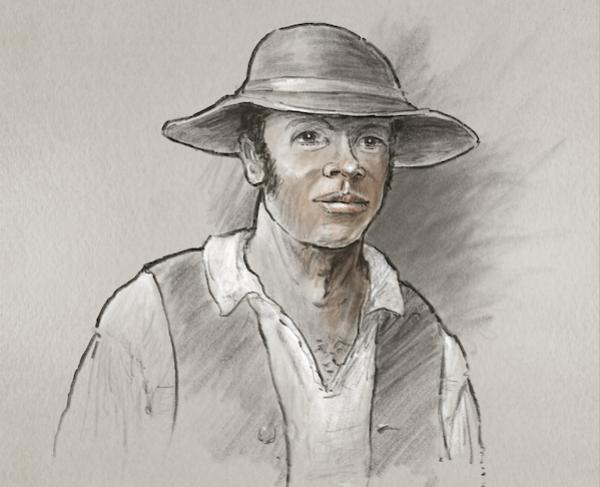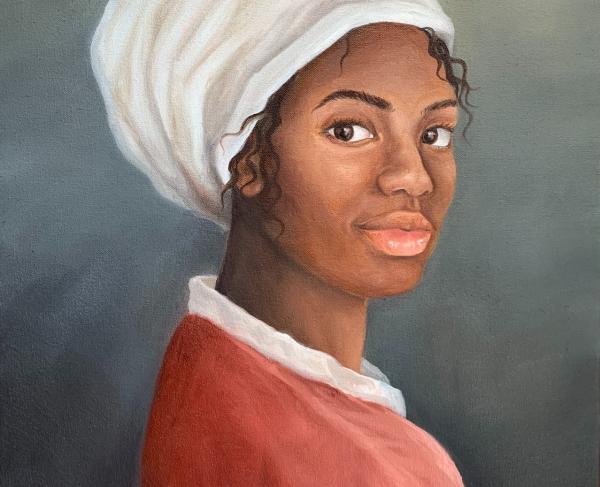Harry Washington

Born around 1740 near the Gambia River in West Africa, this man—known to history as Harry Washington—was captured and sold into slavery when he was about twenty years old. He survived the Atlantic crossing on a slave ship and was enslaved in the colony of Virginia on Daniel Tebb’s plantation in Westmoreland County.
In 1763, George Washington—a colonial militia commander, Virginia farmer, and House of Burgesses member—purchased Harry and three other enslaved people. Harry was sent to work in the Great Dismal Swamp, but two years later, George Washington brought Harry to work on his estate, Mount Vernon, in northern Virginia. Harry ran away from Mount Vernon in 1771, but was captured and taken back to slavery within a few weeks.
As the American Revolution began, George Washington attended the First and Second Continental Congresses, eventually offering his services as a military commander for the Continental Army in 1775. While General Washington took his roles in Philadelphia, Pennsylvania, and with the army at Boston, Massachusetts, other political and social developments unfolded in the Virginia Tidewater region.
The British royal governor in Virginia—Lord Dunmore—had been forced out of the capital at Williamsburg and had started rallying a force of loyalists to fight and reestablish Virginia under royal colonial control. In November 1775, Lord Dunmore issued a proclamation, offering freedom to enslaved men who would join the British cause. Harry self-emancipated himself from George Washington and Mount Vernon in 1776, seeking freedom through service in the British ranks. Like many other formerly enslaved men who volunteered with the British, Harry joined Lord Dunmore’s military unit called the “Ethiopian Regiment.” Here, he gave his name as “Harry Washington,” and he appears with that name in British documents.
Lord Dunmore’s military force was driven out of Virginia, and though the Ethiopian Regiment disbanded, Harry Washington continued to fight for the British. He became a member of the Black Pioneers, working on engineering and construction projects for the British army.
Eventually, Harry Washington joined a Royal Artillery unit stationed in British-held Charleston, South Carolina. He may have participated in the siege and capture of that city in 1780. By 1782, British troops were forced to evacuate Charleston and return to New York City, where a complete withdrawal of troops and loyalist civilians was organized.
The following year—1783—Harry Washington numbered among the more than 400 formerly enslaved men, women, and children who departed New York and sailed to Nova Scotia with the evacuated British. For a few years, he lived in Birchtown, Nova Scotia in harsh living conditions. Eventually, Harry Washington joined settlers to establish a colony in Sierra Leone in West Africa. In 1800, he led an effort to reform the laws of the new colony, but the project failed, and British soldiers banished Harry Washington from the colony. He had sought freedom and better laws on both sides of the Atlantic.
Harry Washington’s fate, date of his death, or burial place is not known at this time.


